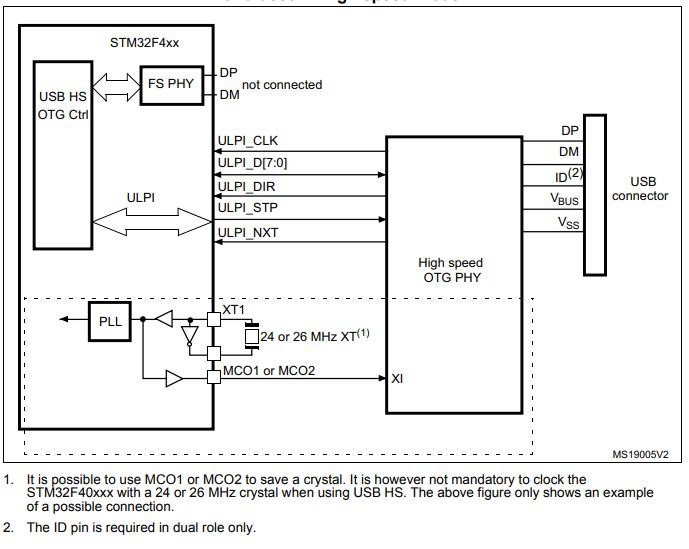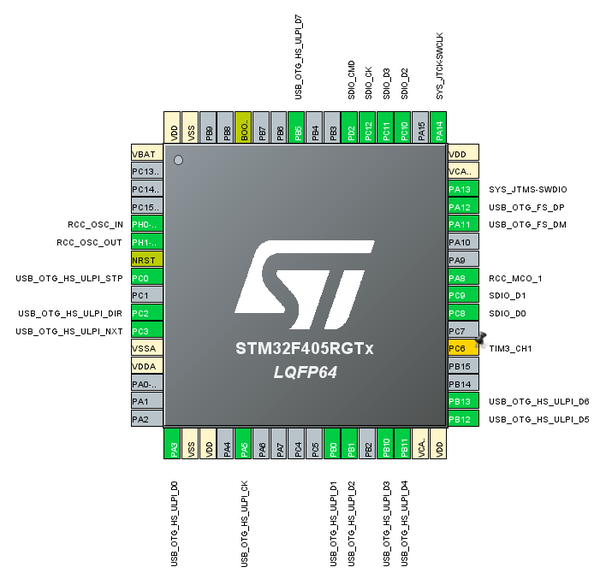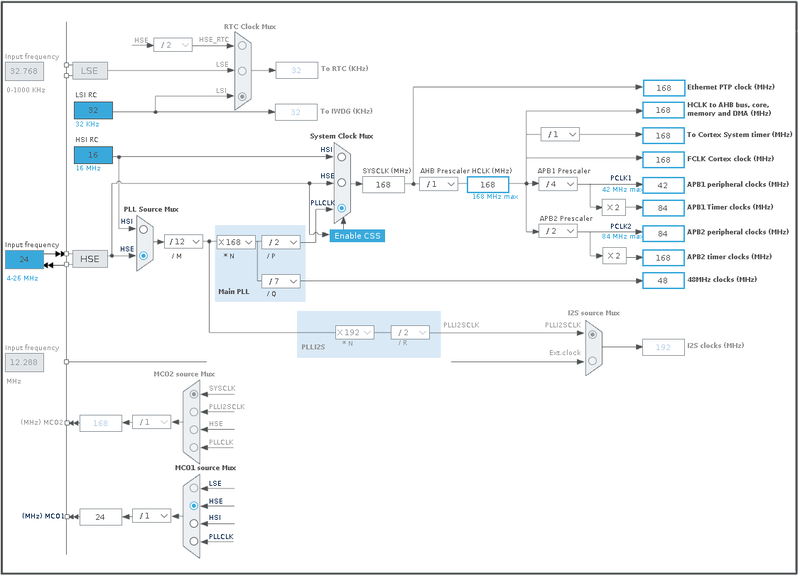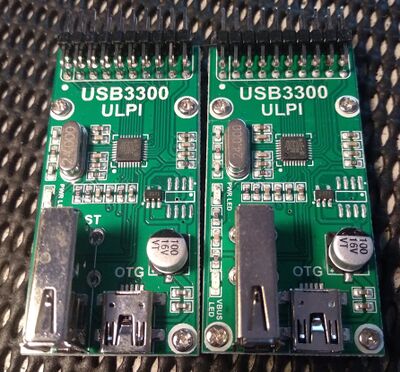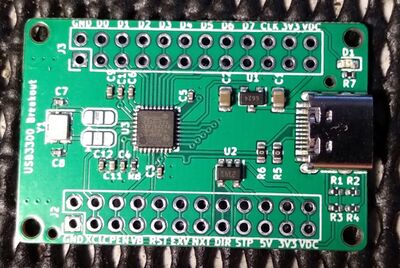Difference between revisions of "STM32 High Speed USB"
Jump to navigation
Jump to search
| (4 intermediate revisions by the same user not shown) | |||
| Line 1: | Line 1: | ||
| − | [[Category:STM32]][[Category:USB]][[Category:STM32 Hardware]][[Category:STM32 Development]] | + | [[Category:STM32]][[Category:USB]][[Category:STM32 Hardware]][[Category:STM32 Development]]{{metadesc|STM32 High Speed USB with external PHY}} |
A number of the STM32F4xx devices are equipped with two USB ports, one FS (Full Speed) and one HS (High Speed). The HS port has a built-in FS PHY, but to achieve HS, an external PHY is necessary. | A number of the STM32F4xx devices are equipped with two USB ports, one FS (Full Speed) and one HS (High Speed). The HS port has a built-in FS PHY, but to achieve HS, an external PHY is necessary. | ||
[[File:USB HS Interface.png]] | [[File:USB HS Interface.png]] | ||
| + | |||
| + | Enabling USB HS port in [[Stm32CubeMX]] reveals the pinpout: | ||
| + | |||
| + | [[File:STM32F4xx USB HS Pinout.png|600px]] | ||
| + | |||
| + | == Clock == | ||
| + | |||
| + | To save a crystal, the STM32F4xx can be driven by a 24 MHz crystal, which is then outputted on MCO1: | ||
| + | |||
| + | [[File:24 MHz MCO1.png|800px]] | ||
| + | |||
| + | == Store bought USB3300 breakout == | ||
| + | |||
| + | To test the HS PHY I managed to find a Chinese breakout board: | ||
| + | |||
| + | [[File:USB3300 ULPI Breakout.jpg|400px]] | ||
| + | |||
| + | With this board I managed to verify it working, but the USB Mini-B connector was/is annoying. | ||
| + | |||
| + | == USB3300 breakout board == | ||
| + | |||
| + | [[File:USB3300 Breakout.jpg|400px]] | ||
| + | |||
| + | == Useful Links == | ||
| + | |||
| + | * [https://www.st.com/content/ccc/resource/technical/document/application_note/group0/0b/10/63/76/87/7a/47/4b/DM00296349/files/DM00296349.pdf/jcr:content/translations/en.DM00296349.pdf USB hardware and PCB guidelines using STM32 MCUs (AN4879)] | ||
Latest revision as of 02:12, 26 October 2021
A number of the STM32F4xx devices are equipped with two USB ports, one FS (Full Speed) and one HS (High Speed). The HS port has a built-in FS PHY, but to achieve HS, an external PHY is necessary.
Enabling USB HS port in Stm32CubeMX reveals the pinpout:
Clock
To save a crystal, the STM32F4xx can be driven by a 24 MHz crystal, which is then outputted on MCO1:
Store bought USB3300 breakout
To test the HS PHY I managed to find a Chinese breakout board:
With this board I managed to verify it working, but the USB Mini-B connector was/is annoying.
